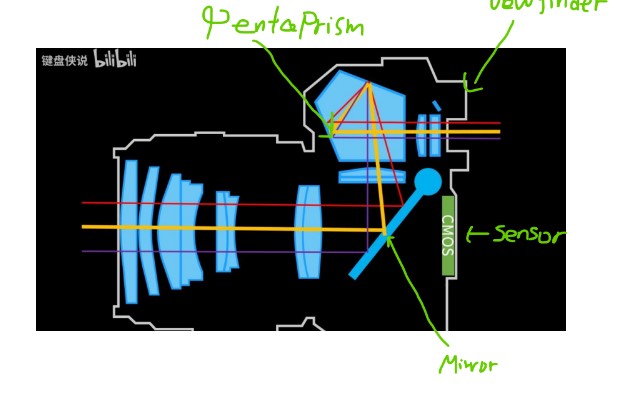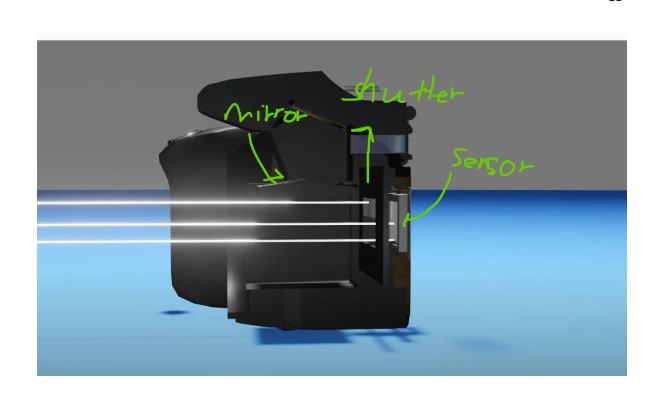Digital Camera
Definition
A Digital camera is an input/output hardware device that captures the light and convertsthe light into a digital image then stores the image as data on a memory card. Digital cameramain purpose is to capture light and turn it into digital image.
Overview
A digital camera is made with a lens and camera body. The camera lens is look like acylinder, and the camera body is look like a rectangular. A digital camera looks like a shape thatis combine with cylinder and rectangular. The circular face of the lens is connected with the frontof the camera body, and the diameter of the lens is close to the height of the camera body.The structure of the best digital cameras available are now usually made withmagnesium compounds, which make the camera slight, easy to handle, durable andresistant.(porreta,2018) The most common material used to construct lens elements is glass, dueto its good optical properties and resistance to scratching.
Components
• Digital camera bodyo Outside components
▪ ON/Off switch :It turns the camera on or off.
▪ Memory card slot :It is a place to insert memory card.
▪ Battery slot :It is a place to insert battery.
▪ AF-assist illuminator :Fill light to focus the subject more easily when the subject is in thedark surrendering.
▪ Mode dial :Use to switch between P, S, A, or M mode.
▪ Viewfinder :It shows the area of the subject that will include in the image.
▪ View screen :It shows the area of the subject that will include in the image andthe setting of the camera.
▪ Exposure compensation button :Adjust the exposure compensation value. Its value determineswhether the picture is darker or brighter. A positive value makesthe picture brighter, negative value make the picture darker.
▪ ISO button :Adjust the ISO sensitivity. Higher ISO sensitivity able to make anexposure in less light environment, but the image will affect by noise.Lower ISO sensitivity does the opposite.
▪ Focus ring :Adjust the distance between lens and image sensor, so image willnot be blurry.
▪ Zoom ring :Enlarge or reduce the subject in an image by adjusting the focallength. It’s represented in millimeters. As the millimeter goeshigher, the magnification goes higher.
▪ Continuous shooting button :Take multiple pictures at once when press the shutter button.
▪ Shutter button :It releases the shutter, so the image sensor can gather light. In otherword, take photograph.
▪ Record button :The camera start recording when press this button.
▪ Delete button :It deletes the image when press this button.
▪ Playback button :Review the images that the camera has in its memory card.
▪ Menu button :Open camera menu for setting.
▪ Multi selector :It controls the action, up, down, confirm, and back.
▪ Microphone :It is an input device to convert sound into electrical signal and sendit to the processor.
▪ Hot shoe :A mounting point on the top of a camera to attach a flash unit andother compatible accessories.
▪ Flash :A device that emits light.
▪ Speaker: An output device that converts electrical signal to correspondingsound.
▪ Connector for HDMI cableA place to plug the HDMI cable to camera, and the image willshow on the external screen that being connected with the camerainstead of the integrated screen.
▪ USB cable connectorA place to plug in USB cable. Its use to transfer digital databetween devices.
o Inside
▪ Lens mount :A place to attach lens to camera.
▪ Mirror :A 45-degree mirror reflect incoming light to the pentaprism.
▪ Pentaprism :It reflects light to the viewfinder.
▪ Image sensor :A device that converts light into electrical signals.
▪ Image processor :A device that converts electrical signals into digital data.
o Digital camera lens
▪ Multiple curved glass :Convert parallel light to a focal point which all the light are joint inone point on image sensor.
▪ Electronic shutter :It is 2 pieces of curtain (lower curtain and upper curtain ) thatparallel to image sensor.
▪ Aperture :It is the opening of the lens. It allows more light to enter the lensand hit the image sensor if the aperture open up. If the aperture stopsdown, less light will hit the image sensor. This controls the focus point ofthe image subject.
Explanation
The digital camera take picture in the following steps. First, press the on/off button to turn on the camera. Second, use the viewfinder to locate the subject. The mirror reflects the light ray to thepentaprism. The pentaprism reflects the light ray through viewfinder to your eyes. Third, use the viewscreen to see the camera setting and adjust the setting using menubutton. Aperture value, shutter speed, ISO are the main variable on the viewscreen. Fourth, use the zoom ring to adjust magnification. Raise flash if necessary. Fifth, press the shutter button. Once press the shutter button, the mirror will rotate up andthe lower curtain will come down. The light ray then hit the image sensor. Once the sensor isexposed to the desire time. The upper curtain will come down blocking the light ray that hittingthe image sensor. Sixth, the image sensor received photon from light ray then convert it to electricalsignals. The image processor then received the electrical signals and convert it to digital data.The digital data then will be store it in memory card. Then you can review your image bypressing the playback button.
Visuals



Conclusion
The timeline of the development of camera is the following. In 1839, the DaguerreotypeCamera was announced. The daguerreotype is a direct-positive process, creating a highly detailedimage on a sheet of copper plated with a thin coat of silver without the use of a negative. In1913, the first 35mm camera developed by Oskar Barnack is being invented. This becomes thestandard later on. In 1948, Edwin Lnad invented the Polaroid camera which could take a pictureand print it in about one minute. In 1978, Konica introduces the first point and shoot autofocuscamera which look like the camera today. In 1981, Sony introduce the world’s first digitalelectronic still camera. Human use thousands of years to learn how to draw. The invention ofcamera makes everyone able to record down their life.
Reference


